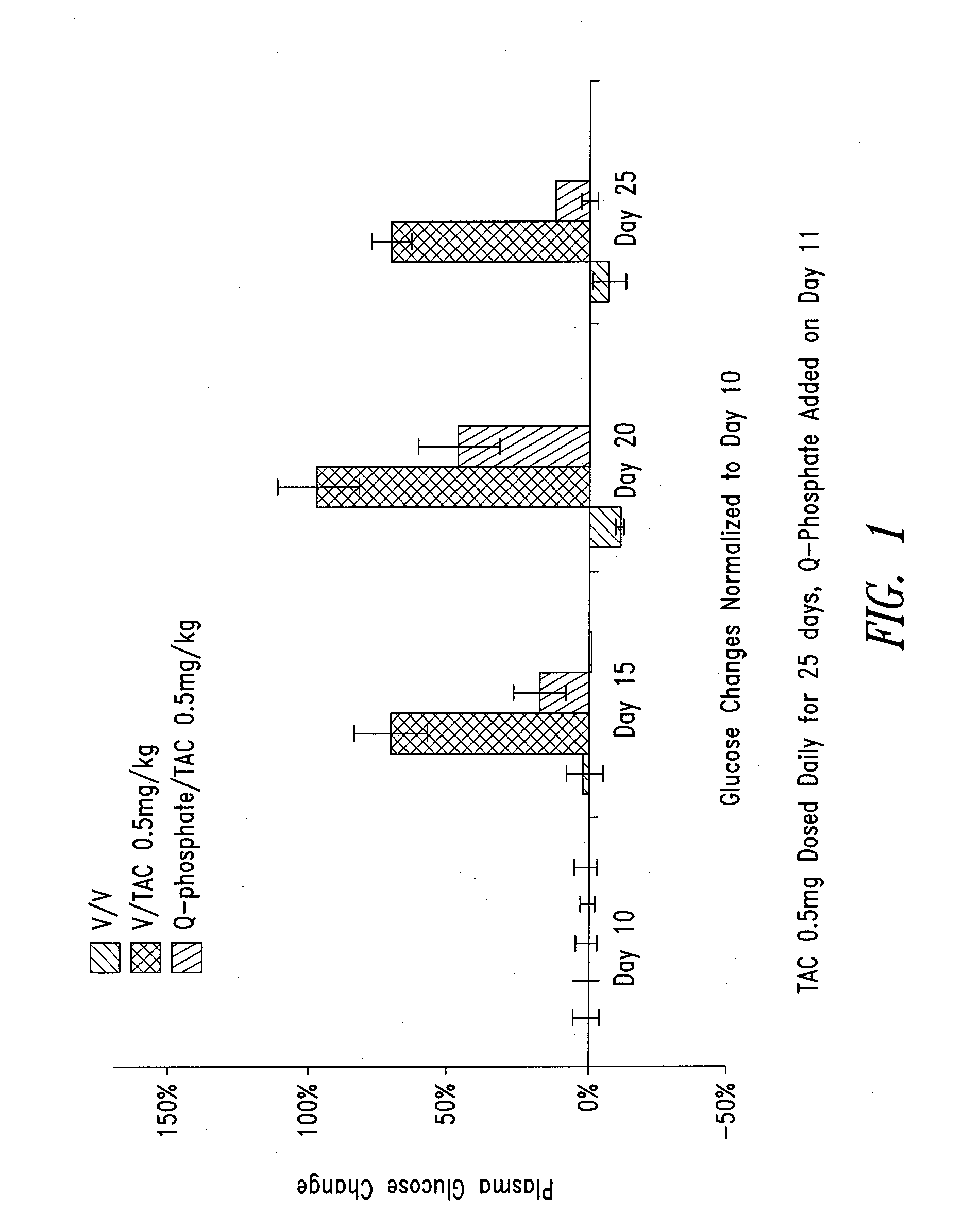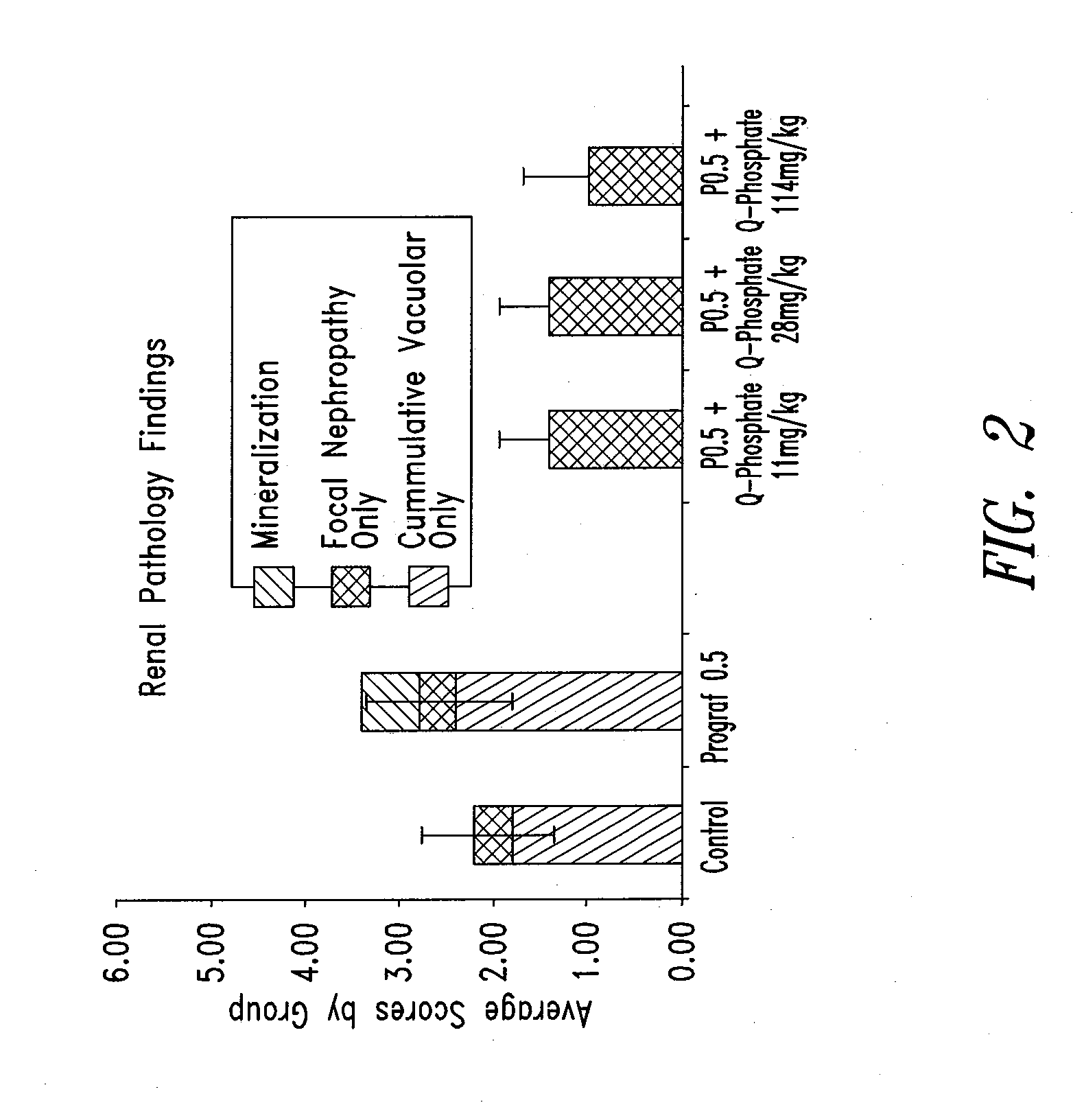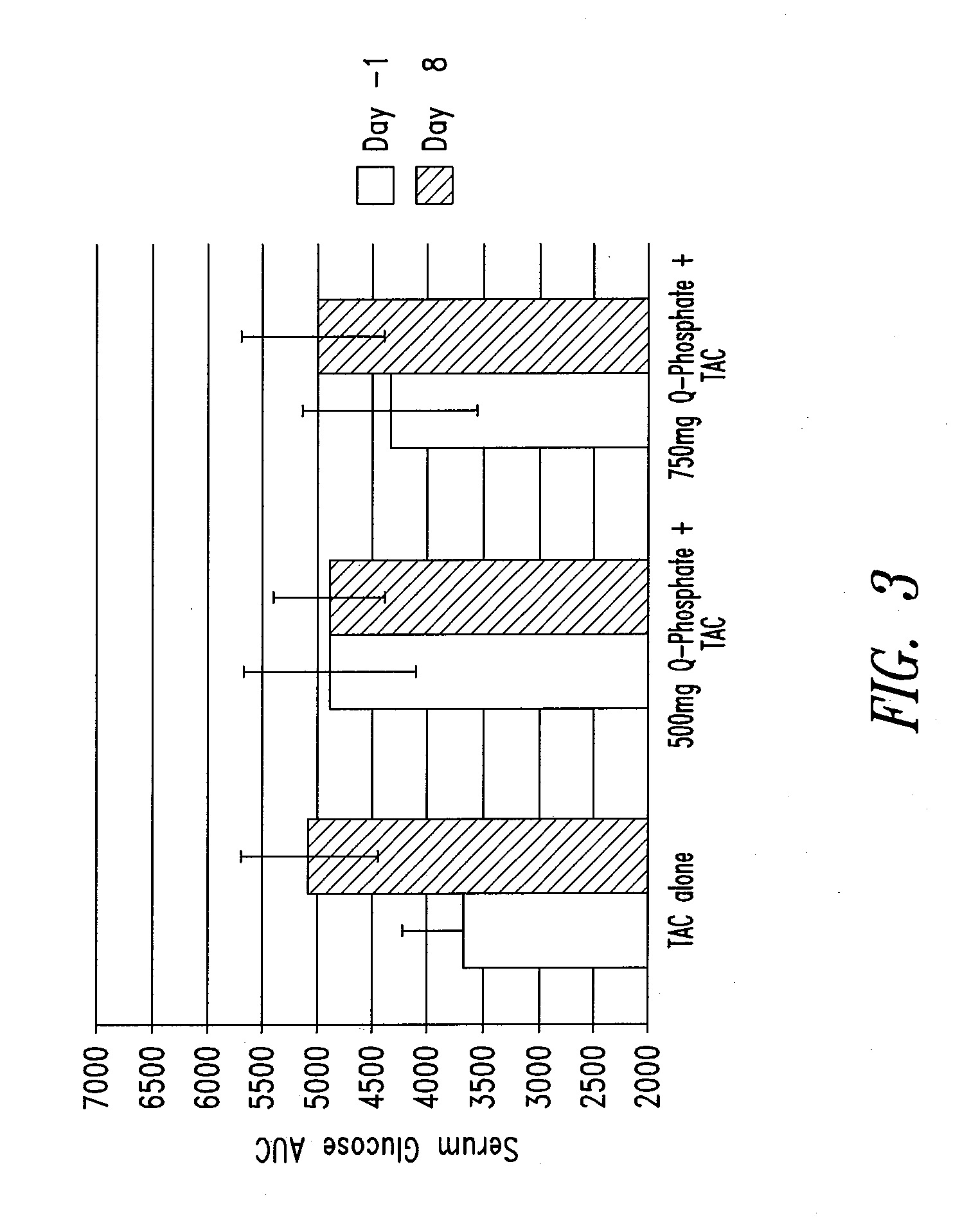Phosphorylated pyrone analogs and methods
a technology of phosphorylated pyrone and analogs, which is applied in the field of phosphorylated polyphenols, phosphorylated flavonoids, and phosphorylated pyrone analogs, can solve the problems of tissue specific toxicity or side effects, barrier laxity, adversely affecting tissue structures, etc., and achieves the effects of reducing appetite, reducing the effect of central nervous system (cns) effect of the therapeutic agent, and reducing the effect of the central nervous system
- Summary
- Abstract
- Description
- Claims
- Application Information
AI Technical Summary
Benefits of technology
Problems solved by technology
Method used
Image
Examples
example 1
Method of Synthesis of Phosphorylated Quercetin
Cyclic and Ring-Opened
[0499]2-hydroxy-4-(3,5,7-trihydroxy-4-oxo-4H-chromen-2-yl)phenyl dihydrogen phosphate. A suspension of quercetin (1 g, 3.31 mmol) and triethylamine (2.3 mL, 16.5 mmol) in dichloromethane (100 mL) at room temperature is treated dropwise with a 10% solution of phosphorus oxychloride in dichloromethane (3.6 mL, 3.97 mmol). The resulting mixture is stirred overnight to afford a heterogeneous mixture along will a brown sticky precipitate. The LCMS of the solution showed clean conversion to a single species with the correct mass for the cyclic phosphate. The solution is separated and the solvent is removed in vacuo to give a yellow solid (presumably the TEA salt of cyclic phosphate). Some of the solid is taken and dissolved in water and a few drops of acetonitrile. Allowing this solution to sit overnight results in the hydrolytic ring opening of the cyclic phosphate to give acyclic phosphate as a yellow solid.
example 2
Method of Synthesis of Quercetin-3′-O-Phosphate
[0500]Quercetin dihydrate (30 g. 0.089 mol, 1 eq.) is added to dichloromethane (3 L) followed by triethylamine (69 mL, 0.49 mol, 5.5 eq.) in one portion. The mixture is stirred for 15 min, then phosphorus oxychloride (9.95 mL, 0.107 mol, 1.2 eq.) is added in one portion (mild exotherm). The mixture is heated to reflux for 15 min, the heat is removed and the mixture is stirred for 18 h at room temperature. The solution is decanted away from the gummy, black residue and is concentrated under vacuum.
[0501]The resultant solid from concentration of the decantate is added acetonitrile (500 mL) followed by water (50 mL) then 1N hydrochloric acid (approx. 20 mL) until a pH of about 5 is achieved. The solution is concentrated to a volume of about 120 mL. The residue is purified with a 600 g, C-18 reverse phase column with 60 mL injections in a gradient. The gradient is 100% water (1 L), 9:1 water:MeOH (1 L), 8:2 water:MeOH (1 L), 7:3 water:MeOH ...
example 3
Stability of Quercetin-3′-O-Phosphate in Water
[0502]Quercetin-3′-O-phosphate is dissolved in water at about pH 8. After 24 hours in water at pH 8, no degradation is seen by NMR after 24 hours at ambient temperature.
PUM
| Property | Measurement | Unit |
|---|---|---|
| weight percent | aaaaa | aaaaa |
| weight percent | aaaaa | aaaaa |
| weight percent | aaaaa | aaaaa |
Abstract
Description
Claims
Application Information
 Login to View More
Login to View More - R&D
- Intellectual Property
- Life Sciences
- Materials
- Tech Scout
- Unparalleled Data Quality
- Higher Quality Content
- 60% Fewer Hallucinations
Browse by: Latest US Patents, China's latest patents, Technical Efficacy Thesaurus, Application Domain, Technology Topic, Popular Technical Reports.
© 2025 PatSnap. All rights reserved.Legal|Privacy policy|Modern Slavery Act Transparency Statement|Sitemap|About US| Contact US: help@patsnap.com



